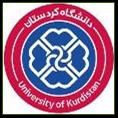|
Course Prerequisites:Physical Chemistry 1 Course Description:This course is an introduction to chemical thermodynamics and chemical kinetics with applications to gases, solutions, and phase equilibrium to provide a firm foundation for understanding the physical principles that govern chemical and biochemical systems. Part 1: Physical change of pure substances· Clapeyron and Clausius Clapeyron Equations · First and higher-order phase transformation · Phase, number of components, degree of freedom · Lever rule, one, two, and three-component phase diagrams Part 2: Nonelectrolyte solutions· Molar fractional quantities · Phase diagram of multi-component systems · Vapor pressure of solution and Raoult's and Henry's laws · Dependency of vapor pressure on the component of the system · Solutions and saturated solutions · Solubility of gases · Thermodynamics of ideal solutions · Real solutions · Activity and activity coefficients, standard states and methods for investigation of the activity of solution components · Fractional distillation and distillation with water vapor · Colligative properties of ideal solutions Part 3: Electrolyte solutions· Activity and standard states of ions in solutions · Average activity coefficient · Debye–Hückel theory · Electrochemical potential · Interface potential difference · Electrochemical cell · The standard potential of cell · Temperature and concentration dependency of electrochemical potential difference · Calculating thermodynamics quantities of a cell by potential difference · Conductivity of electrolyte solutions · Special conductivity · Molar conductivity · Ostwald's law · Ion mobility and transport numbers and methods of measuring them Part 4: Chemical kinetics· Difference between thermodynamics and kinetics investigation of chemical phenomena · Importance of reaction path in kinetics · Rate equations for simple and complex reactions · Elementary reactions · Order and molecularity of a reaction · Chemical and physical methods for investigation of rate law · Half-life and its dependency on the initial concentration of reactants · The rate constant of a reaction · Investigation of a reaction mechanism · Parallel reactions · Series reactions · Reversible reactions · Effect of temperature on reaction rate · Collision and absolute rate theory · Solution phase reactions and comparison with gas-phase reactions · Diffusion controlled reactions · Effect of catalysts on chemical reactions · Homogeneous catalysis – Enzyme catalysis · Inhomogeneous catalysis and adsorption · Auto catalysis reactions Course Materials:Ira. N. Levine, Physical Chemistry: The molecular nature of matter and change, 6th Edition, McGraw Hill, 2009 Share box link: https://drive.google.com/drive/folders/1ES08xSmRSovCCAPuQYeehKkx4MDU_7Nh?usp=sharing |


|
Department of Chemistry, Faculty of Science, University of Kurdistan |

|
Mehdi Irani Teaching duties Methods |
|
|
Weekly Schedule |
|
Session |
Subject |
|
1 |
7.1 The Phase Rule |
|
2 |
7.2 One-Component Phase Equilibrium |
|
3 |
7.4 Solid–Solid Phase Transitions |
|
4 |
Solving problems of Chapter 7 |
|
5 |
9.1 Solution Composition |
|
6 |
9.3 Mixing Quantities |
|
7 |
9.6 Thermodynamic Properties of Ideal Solutions |
|
8 |
Solving problems of Chapter 9 |
|
9 |
Midterm examination |
|
10 |
10.1 Activities and Activity Coefficients |
|
11 |
10.4 Activity Coefficients on the Molality and Molar Concentration Scales |
|
12 |
10.7 The Debye–Hückel Theory of Electrolyte Solutions |
|
13 |
Solving problems of Chapter 10 |
|
14 |
12.1 Colligative Properties |
|
15 |
12.5 Two-Component Phase Diagrams |
|
16 |
12.7 Two-Component Liquid–Liquid Equilibrium |
|
17 |
12.10 Solubility |
|
18 |
Solving problems of Chapter 12 |
|
19 |
13.1 Electrostatics |
|
20 |
13.4 Galvanic Cells |
|
21 |
15.1 Kinetics |
|
22 |
15.3 Viscosity |
|
23 |
15.5 Electrical Conductivity |
|
24 |
Solving problems of Chapter 13 and Chapter 15 |
|
25 |
Second midterm examination. |
|
26 |
16.1 Reaction Kinetics |
|
27 |
16.3 Integration of Rate Laws |
|
28 |
16.4 Finding the Rate Law |
|
29 |
16.8 Temperature Dependence of Rate Constants |
|
30 |
16.11 Unimolecular Reactions |
|
31 |
Solving problems of Chapter 16 |
|
32 |
16.16 Catalysis |
